The Barracuda SecureEdge Manager allows administrators to enroll IoT devices, such as the Secure Connector, with the cloud service. The Barracuda Secure Connector is a hardware device that allows you to connect remote appliances and micro-networks to the corporate data center via VPN. To integrate Secure Connector appliances in your Barracuda SecureEdge environment, you must create a basic configuration for each IoT appliance.
Step 1. Create an IoT Configuration
Go to https://se.barracudanetworks.com and log in with your existing Barracuda Cloud Control account.
- In the left menu, click the Tenants/Workspaces icon.
- From the drop-down menu, select the workspace your appliance should be assigned to.

- In the left menu, click the Infrastructure icon, and select IoT.

- The IoT page opens. In the top-right corner of the window, click New IoT Device.

- The Basic Information blade opens. Enter values for the following:
- Name – Enter the name of the site.
- Edge Service – Select the edge service from the drop-down menu you want your IoT service to connect to.
- Root Password – Enter the root password.
- Confirm Root Password – Retype the root password to confirm.
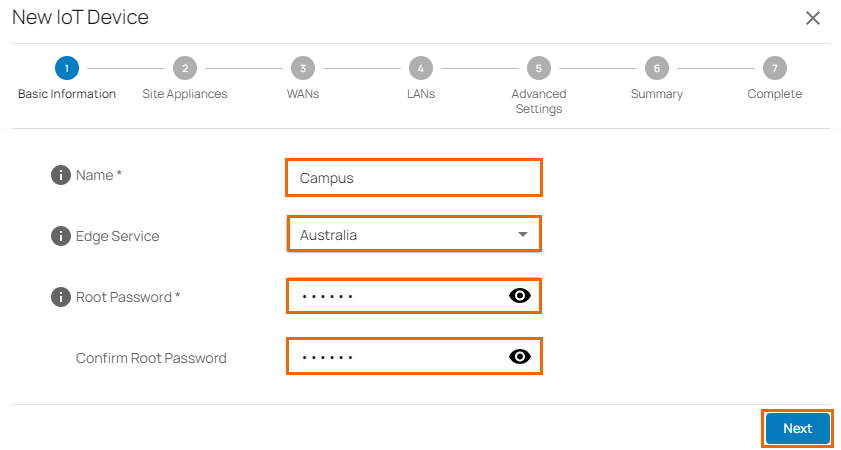
- Click Next. The Site Appliances blade opens.
Select your Secure Connector appliance from the list of appliances linked to your account. Note: After ordering, it might take up to 3 hours before your device is listed.
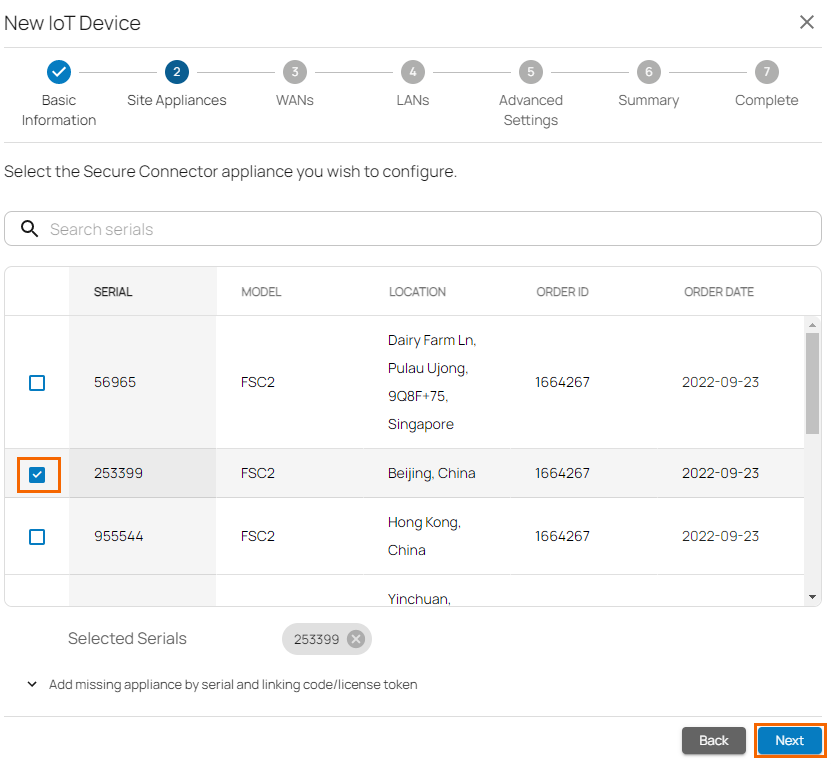
Click Add missing site appliance by serial/linking code. Then, specify values for the following:
- Serial – Enter the serial number of your appliance.
- Code/Token – Enter the linking code (located on the back of the Quick Start Guide shipped with your hardware appliance), or the token of your VTx appliance.

- Click Add to add the device to your account.
- Click Next. The WANs blade opens.
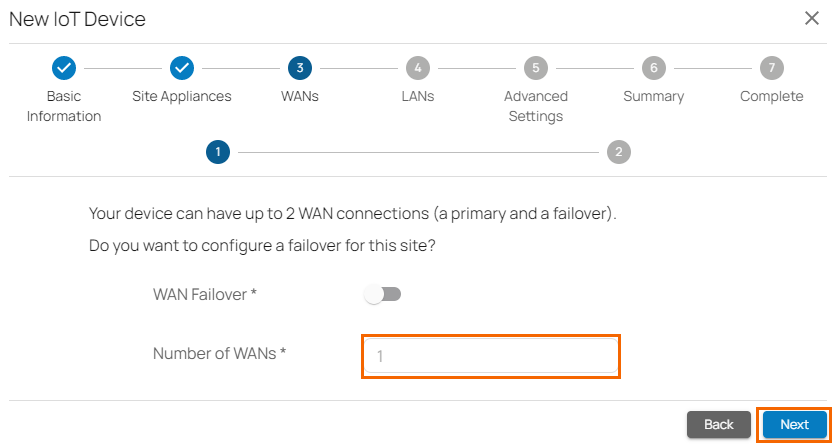
- Click Next. The Configure Primary WAN link blade opens.
- Specify values for the following:
- Name – Enter a name for your uplink.
- Type – Select either Dynamic (for configuration using DHCP) or Static if you want to manually configure the uplink.
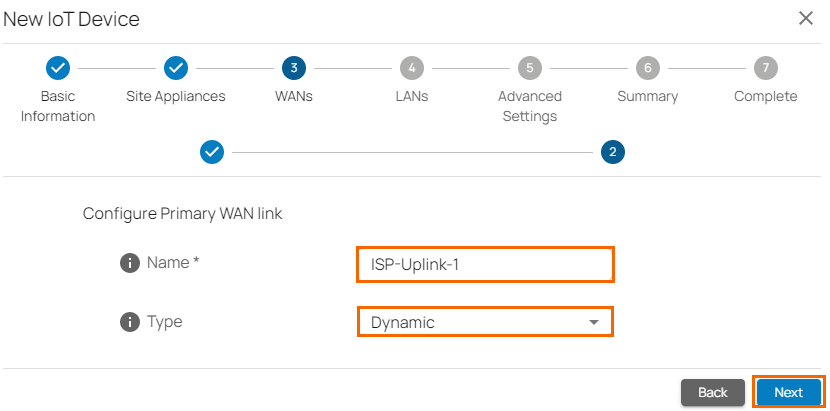
- Click Next. The LANs blade opens. Select the number of desired LAN connections from the drop-down list.
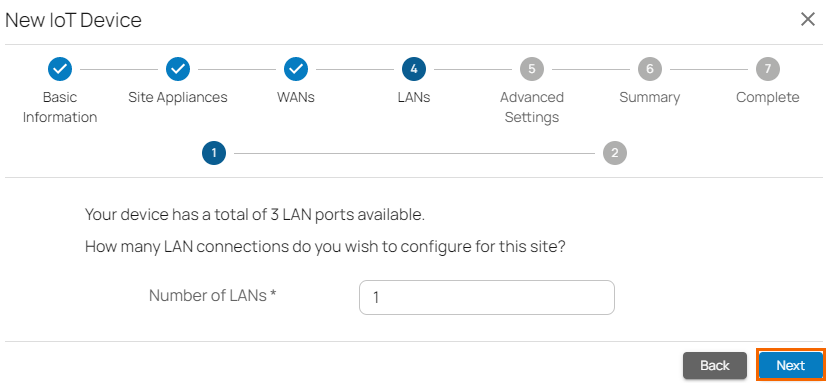
- Click Next. The Configure LAN link blade opens.
- Specify values for the following:
- Name – Enter a name for your LAN.
- Port – Select a port from the drop-down list where the LAN is attached to. You can choose between LAN1, LAN2, and LAN3. Note: If you configure the port as a LAN1, it automatically creates a bridge over the remaining interfaces LAN2 and LAN3.
- IP Address – Enter the IP address.
- Netmask – Enter a number between 0 and 32 for the subnet mask.
- DHCP – Select DHCP from the drop-down menu. You can choose either Disabled or DHCP Service. If DHCP Service is enabled, you must enter the First IP Address and the Last IP Address. IP addresses within this range will be automatically assigned via DHCP.
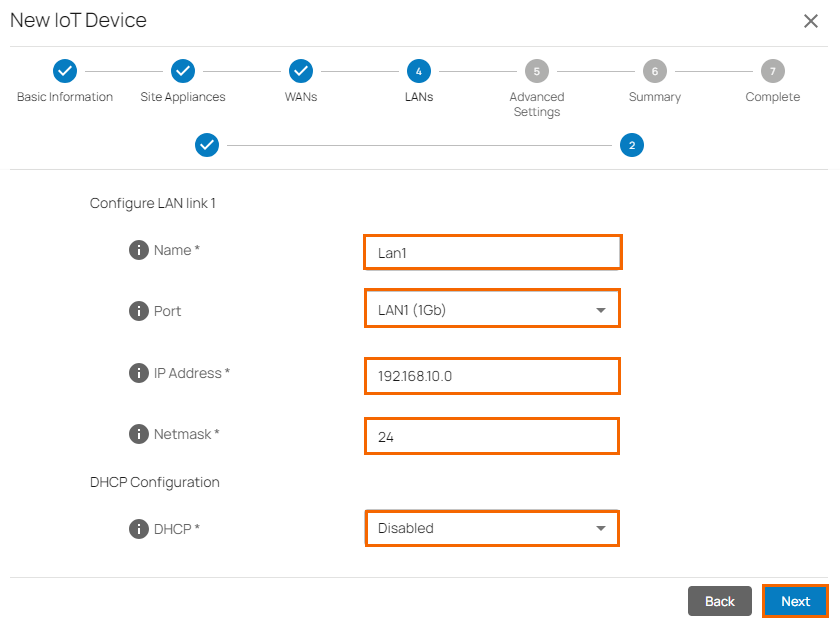
- Click Next. The Advanced Settings blade opens.
- Specify values for the following:
- Primary DNS – Enter the IP address of the primary DNS server.
- Secondary DNS – Enter the IP address the secondary DNS server.

- Click Next. The Summary blade opens.
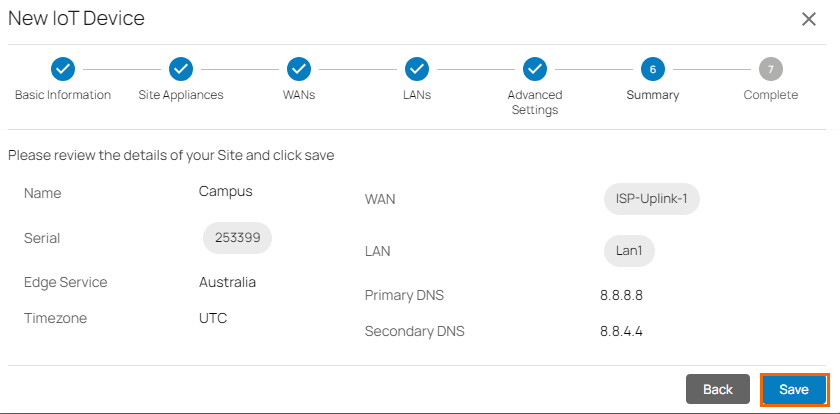
- Review your specifications. If everything is correct, click Save.
- After your IoT configuration has been created successfully, click Finish.
The appliance will automatically apply the configuration upon its first boot.
Step 2. Deploy an IoT Appliance
For more information, see the Quick Start Guide shipped with the Barracuda Secure Connector.
